I have data that looks like this:
Name h1 h2 h3 h4 h5
1 1420468_at_Asb17 0.000 2.328 0.000 0.000 0.000
2 1430261_at_1700024J04Rik 1.236 2.050 0.000 0.000 0.000
3 1431788_at_Fabp12 0.000 2.150 0.000 0.000 0.587
4 1433187_at_B230112I24Rik 0.000 2.240 1.343 0.000 1.383
5 1434430_s_at_Adora2b 0.000 2.006 1.459 0.000 1.272
6 1435217_at_Gm7969 0.727 2.350 1.494 0.976 0.000
7 1436717_x_at_Hbb-y 0.000 2.712 0.000 0.000 0.000
8 1440859_at_Akap6 0.000 2.053 0.000 0.000 1.840
9 1442625_at_--- 0.000 2.064 1.173 0.000 1.035
10 1443715_at_Rbm24 0.969 2.219 0.000 0.000 0.000
11 1445520_at_--- 0.000 2.497 0.000 0.000 0.000
12 1446035_at_Gm7173 0.000 3.869 0.000 0.000 0.000
13 1446597_at_6820445E23Rik 1.000 2.000 0.000 0.000 0.000
14 1448925_at_Twist2 0.000 2.089 0.938 0.000 0.000
15 1449711_at_Atp6v1e1 0.605 2.363 2.350 1.094 0.976
16 1455931_at_Chrna3 0.000 2.354 0.000 0.000 0.000
17 1457647_x_at_1600023N17Rik 0.000 2.734 0.000 0.000 1.812
18 1458975_at_--- 0.000 2.079 0.000 0.000 0.000
19 1459862_at_--- 0.727 2.606 0.000 0.000 1.151
Note in this data (and the actual one) there is no negative values and the positive values can be as large as 100 or so.
What I want to do is to plot heat map with my own assigned color scale and scheme:
- When the value is 0 set it into white.
- When the value is == 1 set it into black.
- When the value is > 1 set it into shade of reds.
- When the value is < 1 and > 0 set it into shade of greens.
also without using any data scaling or built-in z-score transformation. How can I achieve that?
My current code is this:
library(gplots)
# Read data
dat <- read.table("http://dpaste.com/1501148/plain/",sep="\t",header=T);
rownames(dat) <- dat$Name
dat <- dat[,!names(dat) %in% c("Name")]
# Clustering and distance measure functions
hclustfunc <- function(x) hclust(x, method="complete")
distfunc <- function(x) dist(x,method="maximum")
# Define colours
hmcols <- rev(redgreen(2750));
# Plot
pdf("~/Desktop/tmp.pdf",height=10)
heatmap.2(as.matrix(dat),Colv=FALSE,dendrogram="row",scale="row",col=hmcols,trace="none", margin=c(5,10), hclust=hclustfunc,distfun=distfunc,lwid=c(1.5,2.0),keysize=1);
dev.off()
Which produces the following plot, where it uses the default z-score row scaling.





